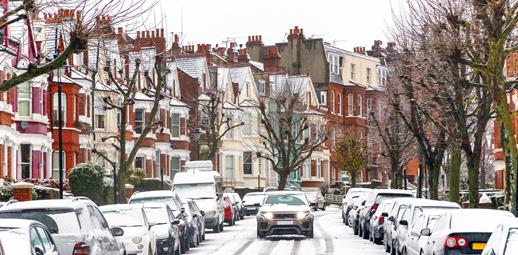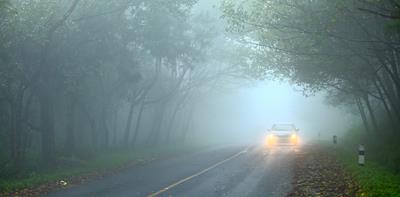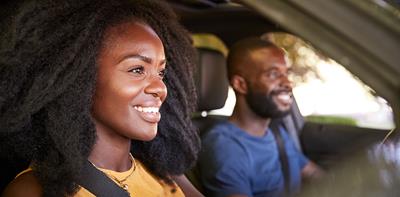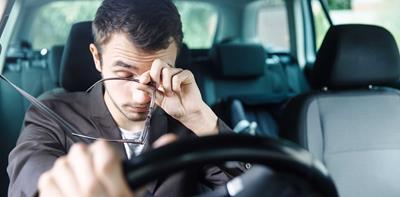
If you’re an anxious driver, or don’t often attempt long distances, then a long cross-country drive at Christmas may seem a daunting prospect.
Christmas can be a tough time of year to take to the roads: it’s usually busy, dark and the weather tends to be either freezing, rainy or both.
And you may be embarking on a road trip this year as rail strikes have left you little alternative; people have been urged to only travel by rail if absolutely necessary on last weekend before Christmas.
But, fear not. With a bit of planning, you can make that journey as smooth as possible and focus on settling in for a happy Christmas.
Avoid the busiest travelling days
Planning for Christmas can be tricky if you have far-flung relatives and friends you hope to visit. But it’s important to try and anticipate conditions on the road and plan accordingly.
For example, the last working day before Christmas - Friday the 23rd this year - is likely to be a particularly hectic time to travel. The evening of the last day of school before the festive holiday break is also a popular time for families to make a break for it and head away.
Closer to your time of departure, follow the news to avoid festive gridlock, and be prepared to change your plans, if need be.
A new route
If you’re driving somewhere for the first time, it can be particularly nerve-wracking.
Take it slow and study the route beforehand to get an idea of where you’re going. It may seem old-fashioned now, but make sure you have a decent road map in your car in case your sat nav or smartphone loses signal or battery.
As well as finding a direct route, and one that avoids heavy traffic, consider the safety of different roads, too. Don’t shy away from motorways; despite popular belief, they’re actually much safer than single carriageway A roads.
Prepare your car
Even if you don’t feel confident about getting under the bonnet of your car, there are some essential checks everyone should do before hitting the road in the winter, especially if taking on a new route, or if the weather is nasty.
This includes checking your tyres, brakes, lights and oil levels, and topping up on windscreen wash. See our rundown of winter car maintenance tips and checks and ensure you have enough fuel to make it to your next pit stop.
If the temperature is below freezing, allow enough time to properly de-ice the windows – don't set off with just a tiny letterbox-shaped hole to peer through and tell yourself the other windows will defrost as you drive along.
Also consider whether it’s worth investing in some winter tyres. The tread is slightly different to standard tyres, which helps them improve the traction when it’s a bit slippery, whether that’s due to standing water, snow or ice.
DRIVE FUEL EFFICIENTLY
Some basic car maintenance can save you money on expensive repairs further down the line.
There are other ways you can reduce the expense of your festive driving, including:
- Wrap up warm, using layers, rather than having the heating maxed out
- Avoid harsh accelerating and sudden braking, as this is an inefficient way to drive. See how two drivers learnt to drive more efficiently and save money at the pump.
- If your car has an ECO driving mode or start/stop function, where the engine cuts out at lights, ensure they’re activated as they’ll help reduce fuel consumption
- Use a free app like PetrolPrices or WhatGas Petrol Prices to find the cheapest fuel near you or on your route
Pack an emergency kit
When loading up your car for Christmas, make room for some essentials, including:
- A fully-charged mobile phone
- Ice-scraper
- Warm clothes, a blanket and practical shoes
- Torch and batteries
- Water and snacks
- Shovel (in case of snow)
Remember not to overload your car and ensure you always have good visibility. Also, if your car is loaded with presents, keep them away from prying eyes to avoid being targeted by opportunist thieves.
Giddy children
Your kids’ excitement will likely be at fever pitch by the time of your big Christmas drive. This can be really distracting.
You can make life easier and put your mind at rest by making doubly-sure they’re safely buckled up in the correct car seat or booster. Also, to help keep them comfortable and happy travellers, avoid stuffing the back seat with luggage and gear.
Don’t forget to plan activities for children in advance to keep them entertained and ensure you can focus on your driving. There are lots of car games they can play and some uplifting Christmas music may also help keep your children happy during your journey.
Wintry weather
Driving in bad weather can be daunting, even for the most experienced driver. Check the route you’re taking and look at the local weather forecasts before you set out.
If it’s icy, stick to gritted roads as much as possible. Keep your speed down and drive slowly. Let your braking, acceleration and steering all be gentle and unhurried. Also, avoid any flooded roads and, in wet conditions, be wary of the risks of aquaplaning.
As disappointing as it can be to cancel or delay your long-held Christmas plans, if the conditions are particularly dangerous, it’s best to stay at home and wait for them to improve.
Driving in the dark
If you’re anxious about the long drive, it’s also best to avoid doing it in the dark. But if you have no choice then remember to:
- Keep your windscreen clean: poor night time visibility can be made worse if your windows are dirty.
- Use your lights correctly: check them before you leave. Use your full beams when needed, but be careful not to dazzle other drivers.
- If you’re tired, take a break: this applies to driving at any time of day, but driving in the dark can be particularly draining. Plan your journey so that you’ll be travelling at a time when you would normally be awake and alert. If you’re travelling with a fellow driver, consider sharing the drive with them.
- Watch out for people and animals: whether its last-minute Christmas shoppers on a high street or a deer on a country road, you need to be particularly alert of other road users on dark winter nights.
One last thing
Before you head inside for the festivities, take a moment to ensure you’re parked in the best possible way. When you're parking in icy or snowy weather, try to face downhill or on a level surface as driving off on an uphill slope is likely to prove risky; you could lose traction and roll backwards into another car.
Ideally, park with the car windscreen facing east. The sun might be weak at this time of year, but it can still help you combat a frosty windscreen in the morning.
No £25 admin fee
When you update your policy online, e.g. amend driver, address or car details.
Original article published in December 2019; updated December 2022


